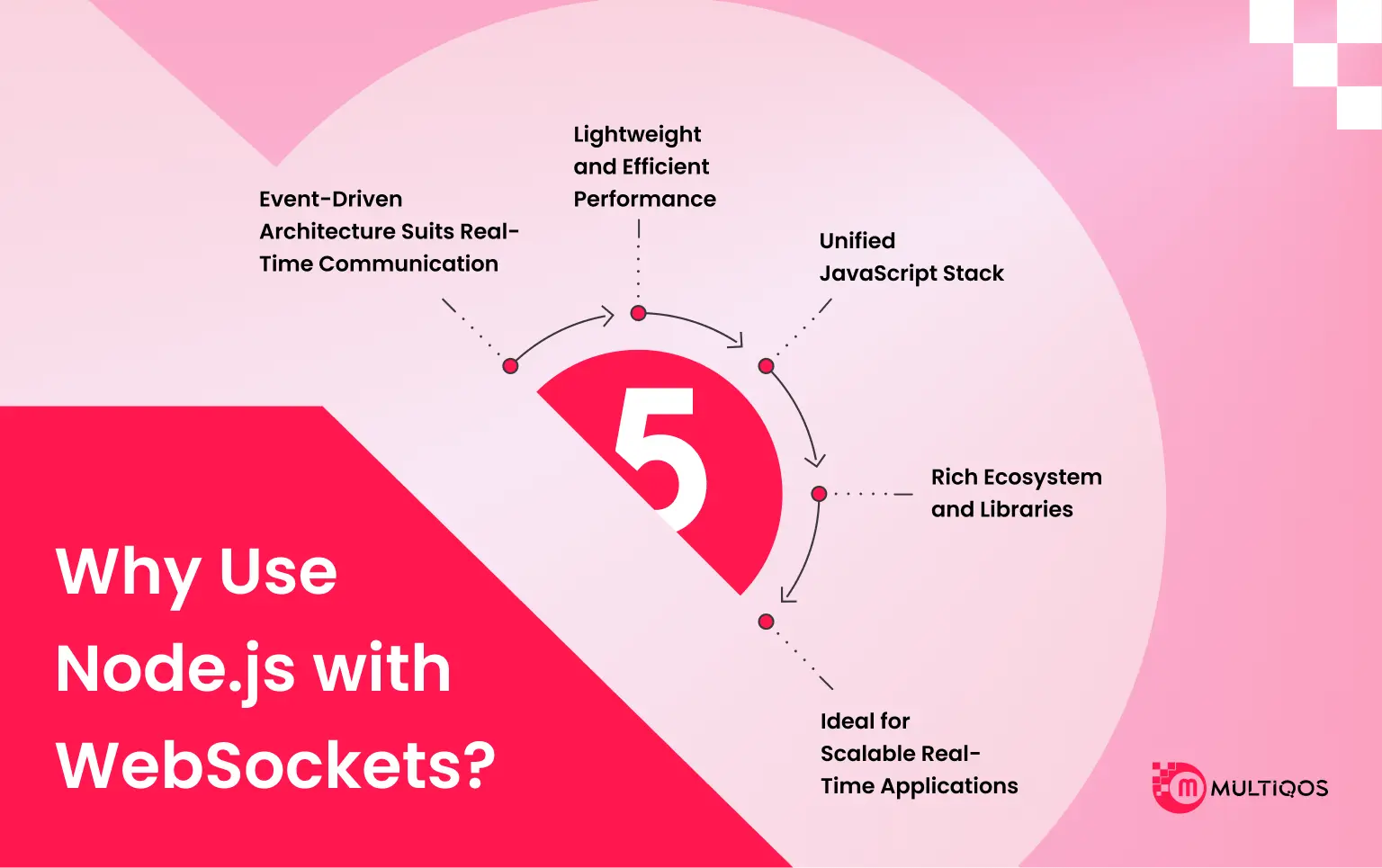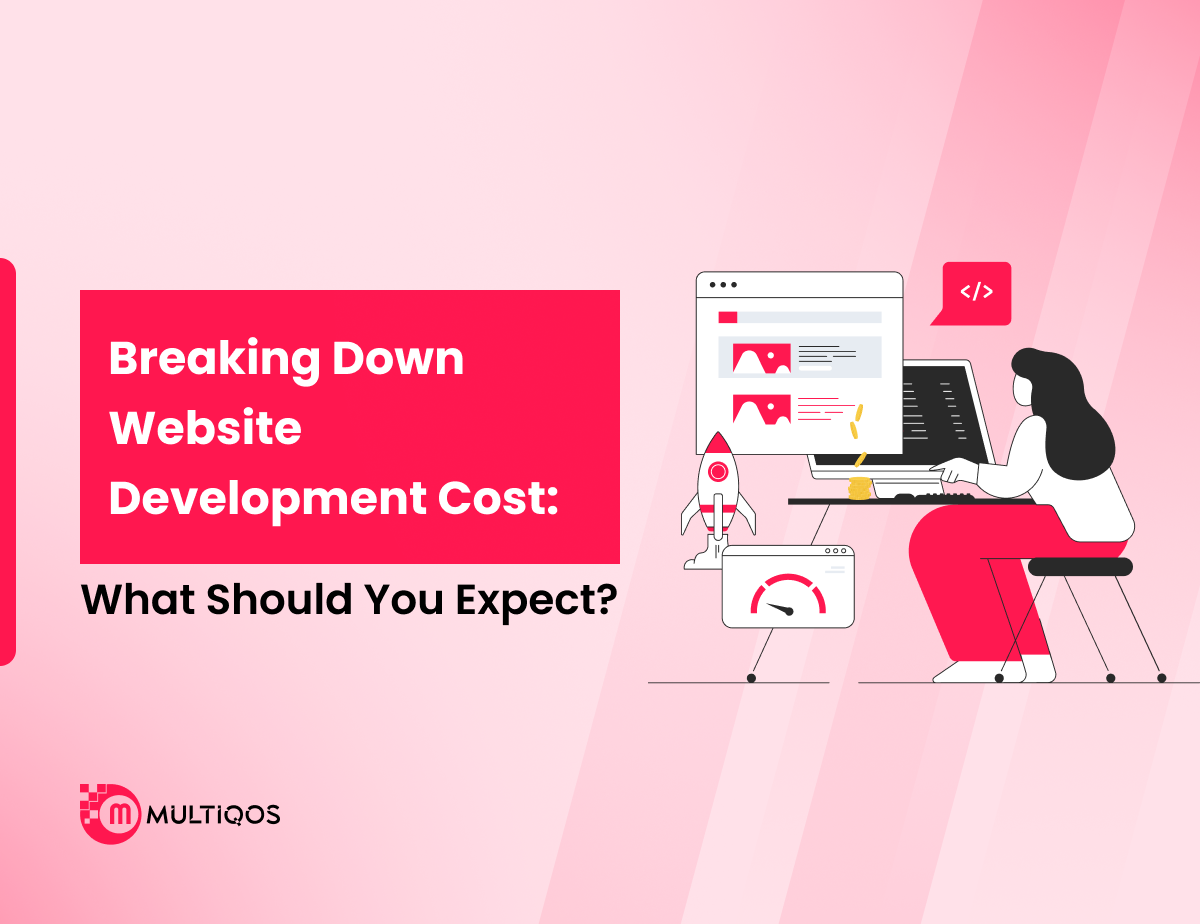Node.js and WebSockets: What They Are and How They Work Together

Summary:
This blog delves into the powerful combination of Node.js and WebSockets, two technologies that play a key role in enabling seamless, two-way communication between servers and clients. It explores how this duo supports the creation of responsive, event-driven applications such as live chat platforms, multiplayer games, collaborative tools, and real-time dashboards.
By leveraging Node.js’s non-blocking, event-driven architecture alongside WebSockets’ persistent connection capabilities, developers can build fast, scalable solutions that keep users engaged and data constantly updated. Whether you’re building your first real-time app or enhancing an existing system, understanding how Node.js and WebSockets work together is crucial for modern web development.
Introduction
Users nowadays are expecting real-time interaction, whether it involves getting instant information, collaborating in the shared field, or live chat. Traditional request-response models are often reduced by distributing this level of responsibility.
This is the place where Node.js and WebSockets come into the game. Together, they create backbones and interactive web applications by activating two-way communication between customers and servers. In this blog, we will discover Node.js and WebSockets, investigate their roles, and how they work together to increase real-time features in web development.
Why Use Node.js with WebSockets?
One of the most useful pairs for high-performing real-time web application development is Node.js and WebSockets, yes, you heard it right! Their technical functions are exceptionally good, such as Node.js WebSocket is an ideal fit for controlling the connection.
1. Event-Driven Architecture Suits Real-Time Communication
As we all know, Node.js is designed on an event-driven, non-blocking I/O model, making it perfect for apps that require constant communication in both directions. Node.js does not wait for the work to be completed; Instead, it starts to handle more events at the same time. This means that it can effectively manage thousands of connections to the web socket without making separate threads for each one.
2. Lightweight and Efficient Performance
Node.js uses a single-thread model with asynchronous recovery, which reduces the use of system resources for traditional multiple-threaded servers. This architecture is perfect for web sockets, which maintain continuous connections and require the distribution of low suppression. Node.js can handle multiple WebSocket connections simultaneously without the use of memory or CPU load.
3. Unified JavaScript Stack
With Node.js, developers can write both clients and servers in JavaScript. This integrated language simplifies stack development, accelerates troubleshooting, and improves the reuse of the code, especially when working with a WebSocket library such as WS or Socket.io.
4. Rich Ecosystem and Libraries
The Node.js website provides a strong ecosystem of libraries and modules to quickly implement functionality. Libraries such as WS, Sockt.io, and uWebSocket.js make it easier to produce secure and scalable WebSocket servers with features such as automated recycling, broadcasting, and namespace-based routing.
5. Ideal for Scalable Real-Time Applications
Whether you create a live chat system, multiplayer game, or collaboration equipment, Node.js offers low-overhead websites to connected infrastructure. Scale and accountability make it a top option for applications where real-time interaction is important.
How WebSockets Work in Node.js?
WebSockets enable a single, single, full-duplex (two-way) communication between customers and servers over repeated connections. Unlike HTTP, which follows the request-response model initiated by the client, in both WebSockets, the data are sent independently by both clients and servers to make them ideal for real-time applications, free to send data. So let’s see how web sockets work in a specific Node.js setup and how a leading Node.js development company can use them to build fast, interactive web applications.
1. Setting Up a WebSocket Server
To create a WebSocket server with Node.js development, you must consider using the ws library, as it is widely used by developers and the outcome is effective. It handles all WebSocket protocol details and provides flexibility to manage events and connections. It is a common initial point to work with Node.js and WebSockets.
Here’s how you set up a basic server:
const WebSocket = require('ws'); const server = new WebSocket.Server({ port: 8080 }); server.on('connection', (socket) => { console.log('Client connected'); socket.on('message', (message) => { console.log(`Received: ${message}`); socket.send(`Echo: ${message}`); }); socket.on('close', () => { console.log('Client disconnected'); }); });
2. Connecting from the Client Side
Here is how a browser is connected to the WebSocket server created with Node.js and WebSockets:
const socket = new WebSocket('ws://localhost:8080'); socket.onopen = () => { console.log('Connected to server'); socket.send('Hello Server!'); }; socket.onmessage = (event) => { console.log(`Message from server: ${event.data}`); }; socket.onclose = () => { console.log('Disconnected from server'); };
3. Real-Time Data Exchange
When the connection between WebSockets is established, Node.js and WebSockets work together to keep the server and clients constantly connected:
- You can send a message at any time without re-establishing the connection.
- This consistent link allows sharp, uninterrupted data flow, which is ideal for real-time apps such as chat systems, information, or multiplayer games.
Using Node.js and WebSockets, developers can ensure that their applications are likely and interactive.
4. Error and Disconnection Handling
Managing unexpected errors and dropped connections is crucial to a smooth user experience. Node.js and WebSockets make it easy with underlying events:
socket.onerror = (error) => { console.error('WebSocket error:', error); };
On the server side, the same error handlers help to detect problems with the therapist and recreate logic or resources. This ensures that apps manufactured with Node.js and WebSockets also remain flexible and stable under poor network conditions.
5. Using Socket.IO (Optional Alternative)
While ws is minimal and near the raw WebSocket API, there is another powerful option for working with Node.js and WebSockets. An abstraction at a high level that simplifies real-time communication.
Features include:
- Automatic reconnection
- Event-based communication
- Broadcasting capabilities
- Fallbacks when WebSocket isn’t supported
Installation:
npm install socket.io
Socket.io is perfect for web developers who are in search of more user-friendly and production-ready development solutions when using Node.js and WebSockets in scalable applications.
Conclusion
Integrating Node.js and WebSockets has become a foundation stone for making sharp, interactive, and real-time web applications. If you are planning to integrate real-time features into your next project, it is important to have the right expertise on your team. Whether you start an existing system with scratches or scaling, it is time to hire Node.js developers who understand the difficulties of events and real-time communication.
With the right team, you can make your ideas a high-level and scalable solution that is in today’s competitive digital scenario.
FAQs
You can use the underlying HTTP module with the WS library or easily enter the WebSockets communication in Node.js applications with frameworks like socket.io.
Common examples include live chat applications, multiplayer games, live sports score updates, collaborative tools (like Google Docs), and stock trading platforms.
Yes, WebSockets can be secured using WSS: // (WebSocket Secure), similar to HTTPS, which encrypts data in transit to prevent eavesdropping and tampering.
Popular Node.js WebSocket libraries include ws, Socket.IO, uWebSockets.js, and SockJS.
Node.js event-operated listeners are used to manage the connection between web connectors, handle messages, detect disconnections, and manage re-combination strategies.
Get In Touch







